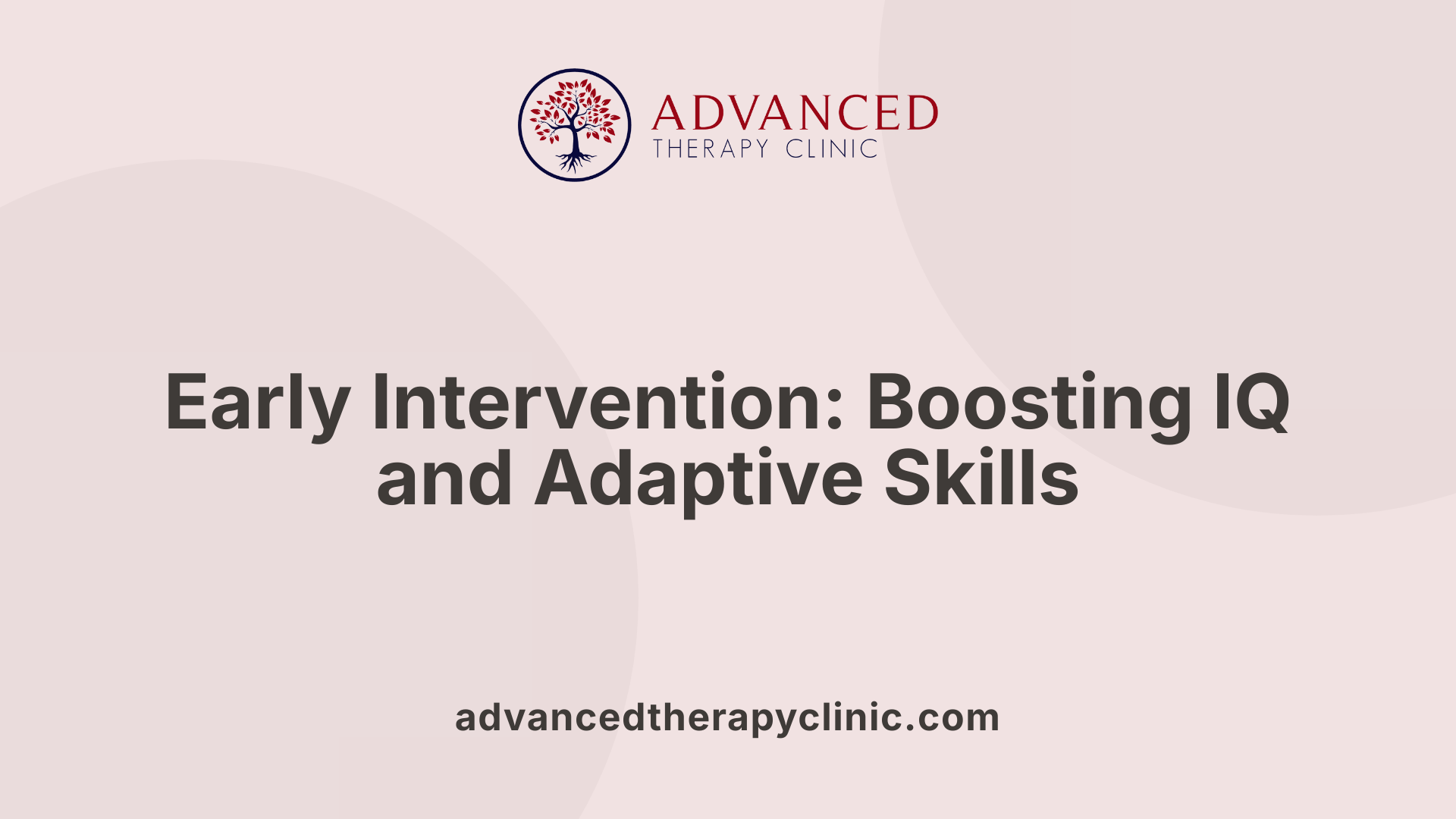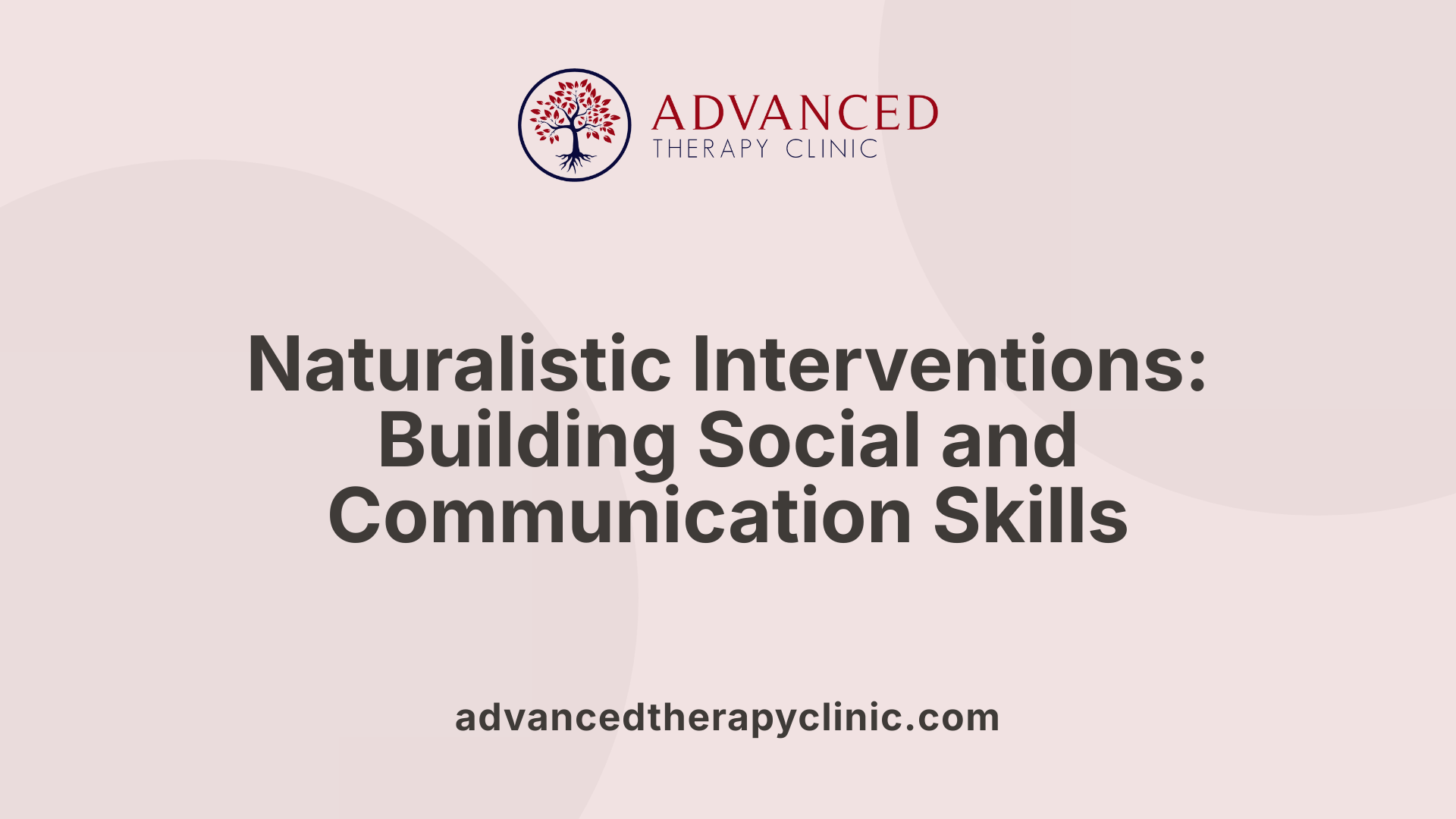Can You Be Smart and Have Autism


Understanding Intelligence Within the Context of Autism Spectrum Disorder
Autism Spectrum Disorder (ASD) is often misunderstood in societal contexts, particularly regarding intelligence and cognitive abilities. This article explores how individuals with autism can indeed be smart and capable, outlining scientific insights into cognitive function, interventions that bolster intellectual and adaptive skills, and the human elements that enhance therapy effectiveness.
Defining Intelligence in Autism: Beyond Stereotypes

How does intelligence vary in individuals with Autism Spectrum Disorder (ASD)?
Intelligence in individuals with ASD can vary widely, contradicting common stereotypes that suggest uniform intellectual deficits. Many with ASD display a range of cognitive abilities, from profound challenges to exceptional skills in specific areas.
Studies indicate that interventions like Applied Behavior Analysis (ABA) and Comprehensive Early Interventions can improve cognitive function and IQ, especially when started early and delivered intensively.
How is "smartness" defined in the context of autism?
In the autism context, "smartness" extends beyond traditional IQ scores to include adaptive behaviors, problem-solving skills, social communication, and learning capabilities. Effective training in social and communication skills through Naturalistic Developmental Behavioral Interventions (NDBI) and social skills training further support the broad concept of intelligence.
Intelligence here also reflects the individual's ability to adapt, communicate, and engage with their environment, which interventions target alongside cognitive development.
Understanding intelligence in autism requires embracing its diversity and recognizing the success of behavioral and developmental interventions in fostering a wide array of abilities.
Applied Behavior Analysis (ABA): Enhancing Cognitive and Educational Outcomes

How does ABA improve cognition in individuals with ASD?
Applied Behavior Analysis (ABA) is widely recognized as the most extensively utilized and effective approach for addressing behavioral and educational needs of individuals with Autism Spectrum Disorder (ASD). Numerous scientific studies have demonstrated that ABA interventions can lead to significant improvements in cognitive functions. These improvements include enhanced intellectual abilities, better problem-solving skills, and an increase in IQ scores, especially when interventions are comprehensive and started early.
What educational benefits does ABA offer to individuals with ASD?
Beyond cognitive gains, ABA positively impacts various educational domains. It helps enhance language skills, including communication and vocabulary development, which are critical for learning. ABA-based techniques also target social skills, enabling individuals with ASD to better engage and interact within educational settings. Early Intensive Behavioral Intervention (EIBI), a form of comprehensive ABA, is particularly effective in improving adaptive behaviors and intellectual functioning when started before age three and applied intensively for 2 to 4 years.
In summary, ABA serves as an evidence-based foundation to support both cognitive and educational development in people with ASD, making it a cornerstone of therapeutic and educational planning.
Early Intensive Behavioral Intervention: Impact on IQ and Adaptive Behaviors

What is Early Intensive Behavioral Intervention (EIBI)?
Early Intensive Behavioral Intervention, commonly known as EIBI, is a comprehensive ABA-based treatment designed for young children with Autism Spectrum Disorder (ASD). It focuses on applying behavioral principles intensively to enhance cognitive and adaptive skills.
How effective is EIBI in improving IQ and adaptive behaviors?
Numerous studies have shown that EIBI significantly improves IQ levels and adaptive behaviors in children with ASD. The intervention targets various skills including communication, social interaction, and daily living tasks, contributing to overall developmental progress.
Why is an early start important?
EIBI is most effective when started before the age of three. Early intervention takes advantage of the critical period of brain development, allowing for greater neural plasticity which supports learning and behavioral improvements.
What is the recommended duration for intensive intervention?
Intensive intervention typically lasts between 2 to 4 years. Consistent and sustained therapy during this period is vital to achieve meaningful improvements. The high number of therapy hours per week ensures skill acquisition and generalization across settings.
This approach has transformed outcomes for many children with ASD, making early, intensive application of behavioral techniques a cornerstone of effective autism treatment.
Naturalistic Developmental Behavioral Interventions: Promoting Social and Communication Skills

What are Naturalistic Developmental Behavioral Interventions (NDBI)?
Naturalistic Developmental Behavioral Interventions (NDBI) are therapeutic approaches designed to enhance social and communication skills in individuals with autism spectrum disorder (ASD). These interventions take place within natural settings, such as the home or community, making learning more relevant and engaging.
How does the Early Start Denver Model fit into NDBI?
One prominent example of NDBI is the Early Start Denver Model (ESDM). This model targets young children with ASD to stimulate social engagement and communication abilities through play and everyday interactions. ESDM emphasizes building skills in a natural, supportive environment, encouraging spontaneous social behaviors.
What improvements are seen with NDBI?
Research shows moderate evidence that interventions like ESDM significantly improve social and communication skills. By embedding learning opportunities in daily routines, children develop abilities that generalize more easily across situations, enhancing their overall social responsiveness and communication effectiveness.
These natural, developmentally informed interventions play a crucial role in fostering meaningful social connections and improving quality of life for children with ASD.
Social Skills Training Across Age Groups: Medium to Large Effects

What Are SST Methodologies and How Are They Applied Using Behavioral Principles?
Social Skills Training (SST) involves structured sessions aimed at teaching individuals with Autism Spectrum Disorder (ASD) how to interact more effectively and comfortably with others. SST utilizes behavioral principles such as modeling, reinforcement, and role-playing to help participants practice and improve social behaviors.
What Is the Evidence for the Effectiveness of SST?
Meta-analyses of various SST programs for individuals with ASD have consistently demonstrated medium to large effects in enhancing social skills across different age groups. These improvements often include better communication, increased initiation of social interactions, and enhanced understanding of social cues.
SST effectiveness is supported by its foundation in applied behavior analysis techniques, making it one of the reliable approaches to meeting the social development needs of individuals with autism. This broad applicability and positive research findings underscore SST’s value in comprehensive ASD interventions.
Enhancing Communication: The Role of Picture Exchange Communication System (PECS)
What is PECS and how is it used in young children?
The Picture Exchange Communication System (PECS) is a communication intervention designed to help individuals with autism spectrum disorder (ASD) express their needs and desires using pictures. Primarily targeting young children, PECS enables them to communicate effectively even before developing verbal skills. Through exchanging images, children can request items or activities, which significantly reduces frustration and behavioral challenges.
How does PECS support communication skill development?
PECS enhances various communication abilities by teaching children to understand and use symbolic representations. This system encourages spontaneous communication rather than just responding to prompts. As children progress through its phases, they learn to build sentences and engage in more complex interactions, fostering both receptive and expressive language skills.
What are the benefits of PECS in initiating conversations?
One of the notable benefits of PECS is its effectiveness in promoting the initiation of conversations. By empowering children to make requests and share information voluntarily, PECS helps develop social interaction skills. This early foundation paves the way for improved social communication, enabling children with ASD to engage more naturally with peers and caregivers in everyday situations.
Behavioral Interventions for Common Challenges: Sleep and Eating Behaviors
What Sleep Behavioral Strategies Help Individuals with Autism?
Behavioral interventions addressing sleep difficulties in individuals with Autism Spectrum Disorder (ASD) have demonstrated notable effectiveness. Techniques such as fading bedtime procedures, which gradually adjust the child's bedtime routine, help improve sleep duration and reduce the time it takes to fall asleep (sleep latency). Contingent reinforcement, where positive behaviors are rewarded to encourage adherence to bedtime routines, also supports better sleep outcomes.
How Are Eating Behaviors Improved Through Behavioral Interventions?
Eating problems common in ASD can be targeted with behavioral strategies that increase food intake and expand dietary variety. By applying reinforcement principles, therapists encourage desired eating behaviors. These approaches help children overcome selective eating or food aversions, leading to healthier nutrition and improved mealtime experiences.
What Are the Outcomes of These Behavioral Techniques?
Multiple studies validate the effectiveness of these interventions, showing measurable improvements in both sleep and eating behaviors. For sleep, increased total sleep time and shortened onset of sleep have been consistently reported. Eating interventions have led to enhanced food acceptance and increased caloric intake. Together, these behavioral methods significantly contribute to overall well-being and adaptive functioning in individuals with ASD.
| Behavioral Issue | Interventions Used | Outcomes Achieved |
|---|---|---|
| Sleep | Fading bedtime, contingent reinforcement | Longer sleep duration, reduced sleep latency |
| Eating | Reinforcement-based feeding strategies | Increased food intake, reduced feeding problems |
Implementing these targeted behavioral interventions offers practical solutions for managing common but challenging daily life issues in the ASD population.
Techniques for Toilet Training in Children with Autism
Effective Techniques for Toilet Training in Children with Autism
Toilet training can be a challenging process for children with autism spectrum disorder (ASD), but several behavioral interventions have shown success in this area. Four techniques often used in Applied Behavior Analysis (ABA) for toilet training include shaping, graduated guidance, scheduled toileting, and stimulus control.
Shaping involves reinforcing successive approximations towards the desired toileting behavior. This means encouraging the child to gradually perform steps closer and closer to successful toilet use, such as sitting on the toilet first, then trying to urinate or defecate there.
Graduated guidance provides the child with physical prompts that are faded slowly over time. This technique helps the child learn the sequence of toileting activities by temporarily guiding their actions and reducing assistance as independence increases.
Scheduled toileting involves taking the child to the bathroom at regular, planned intervals. This routine helps establish consistency and encourages the child to use the toilet even if they do not initially recognize the need themselves.
Stimulus control focuses on using environmental or situational cues to trigger toileting behavior. For example, ensuring the child associates the bathroom environment or specific signals with using the toilet supports generalization and maintenance of skills.
Together, these ABA techniques form a comprehensive framework that has proven effective in improving toileting skills in children with ASD. Their systematic and individualized approach supports children in gaining independence and reduces parental stress associated with toilet training challenges.
Cognitive Behavioral Therapy (CBT) for Emotional Regulation in Adolescents and Adults with ASD
What is the role of CBT in managing emotional difficulties for individuals with ASD?
Cognitive Behavioral Therapy (CBT) is a psychological treatment that focuses on changing patterns of thinking and behavior. For adolescents and adults with Autism Spectrum Disorder (ASD), CBT has proven effective in addressing various emotional difficulties such as depression, anxiety, and anger. It provides structured strategies to help individuals identify and manage negative thoughts and feelings, thereby improving emotional regulation.
Which emotional challenges are effectively addressed by CBT?
CBT specifically targets common emotional challenges faced by individuals with ASD, including:
- Depression: Helping individuals recognize symptoms and develop coping mechanisms.
- Anxiety: Teaching relaxation and exposure techniques to reduce stress.
- Anger management: Guiding patients in understanding triggers and practicing controlled responses.
What are the limitations associated with the availability of CBT?
Despite its effectiveness, the application of CBT for adolescents and adults with ASD is often limited by the scarcity of trained professionals. Many regions lack clinicians who specialize in both autism and CBT, which restricts access to this form of therapy. This gap highlights the necessity for increased training programs and resources to ensure the availability of qualified therapists.
CBT remains a valuable tool for emotional regulation in ASD, but addressing professional shortages is crucial for broader implementation and impact.
Parent-Mediated Interventions: Empowering Families to Support Social and Communication Skills
What are Parent-Mediated Interventions (PMI) and how effective are they?
Parent-Mediated Interventions (PMI) involve training parents to use specific behavioral strategies to improve their child's social interaction and communication. Research shows that when parents implement these interventions with fidelity, PMI can significantly enhance social and communication skills in children with autism spectrum disorder (ASD). These interventions also contribute to reducing parental stress and boosting self-efficacy, making them beneficial for both children and their families.
What is the P-ESDM Program?
The P-ESDM (Parent-implemented Early Start Denver Model) program is a prominent example of PMI. It teaches parents how to apply the principles of the Early Start Denver Model, a naturalistic developmental behavioral intervention, in daily routines. Through this structured approach, parents learn to promote social engagement and communication in natural settings, increasing the effectiveness and consistency of interventions.
How do parents acquire and apply the necessary skills?
Parents participating in PMI programs receive training that emphasizes practical, hands-on behavioral techniques tailored to their child's needs. This skill acquisition involves understanding observable behaviors, applying reinforcement strategies, and managing challenges like sleep or feeding problems. Comprehensive support and ongoing coaching help ensure that parents can confidently implement interventions, leading to improved outcomes for their children.
Parent-Mediated Strategies to Address Challenging Behaviors and Parental Stress
What are Parent-Mediated Interventions (PMI) for Challenging Behaviors?
Parent-Mediated Interventions involve training parents to implement behavioral strategies aimed at reducing challenging behaviors in children with Autism Spectrum Disorder (ASD). Programs like P-ESDM teach specific skills to parents that support improvements in social interaction and communication, extending the reach of effective ABA methods into the home environment.
How Do PMIs Reduce Parental Stress?
Research shows that when parents are equipped with effective techniques, their confidence and control over managing difficult behaviors improve. This leads to significant reductions in parental stress. By actively participating in interventions, parents gain a greater sense of competence and emotional relief, improving overall family well-being.
In What Ways Do PMIs Improve Parental Self-Efficacy?
PMIs encourage parents to become skilled therapists within their own homes. Studies demonstrate that parent implementation fidelity matters; when parents consistently apply the taught techniques, their self-efficacy—belief in their ability to positively influence their child's development—increases. This empowerment results in more sustained and effective intervention outcomes.
These benefits make parent-mediated approaches vital for supporting families facing the challenges of ASD, offering practical tools to manage behaviors while enhancing parental well-being.
The Human Side of Therapy: Interpersonal Skills Enhancing ABA Effectiveness
Why Are Care, Attentiveness, and Creativity Important in ABA Therapy?
Effective ABA therapy goes beyond technical skill; it requires therapists to embody interpersonal qualities like care, attentiveness, and creativity. These traits create a supportive environment that nurtures a child's learning and emotional growth. Care and attentiveness help therapists respond sensitively to the unique needs of each child, while creativity allows for flexible and engaging teaching strategies that keep children motivated and connected.
How Does Behavioral Artistry Influence Therapy Outcomes?
Behavioral Artistry (BA) refers to a set of interpersonal skills that enhance the delivery of ABA treatment. Therapists who score higher in BA display warmth, liveliness, and attentiveness during sessions. These qualities translate into visibly caring behaviors, such as pleasant facial expressions and positive body language, which foster stronger therapeutic relationships. Parents of children with autism have expressed a clear preference for therapists exhibiting BA traits, demonstrating its social validity and importance.
What Does Research Say About Behavioral Artistry in ABA Professionals?
Studies using personality assessments like the 16PF reveal that, compared to professionals in other human services fields, ABA practitioners tend to exhibit lower levels of BA traits. Despite this, those with higher BA characteristics are seen more positively during therapy and are perceived to deliver better outcomes. Therefore, cultivating these interpersonal skills in practitioners may be just as crucial as technical proficiency in improving therapy effectiveness.
Social Validity of Behavioral Artistry: Parents’ Preference for Therapist Characteristics
Which therapist descriptors do parents prefer during autism therapy?
Parents of children with autism consistently favor therapist qualities aligned with behavioral artistry (BA). These include traits such as warmth, attentiveness, care, and creativity. In contrast, descriptors that fall outside the BA framework are less preferred, highlighting the social validity of therapists demonstrating strong interpersonal skills during Applied Behavior Analysis (ABA) treatments.
How does therapy align with behavioral artistry (BA)?
Therapists with higher BA scores show more visibly caring behaviors like pleasant facial expressions and liveliness. These traits contribute to therapy sessions that feel more engaging and supportive for families. While ABA focuses on evidence-based strategies, integrating BA characteristics enriches the therapeutic experience by making interventions more personal and responsive.
What evidence supports the social validity of BA-aligned therapist characteristics?
Research has shown that therapists exhibiting higher BA traits are perceived more positively during sessions. Parents’ preferences correlate with observational ratings indicating therapists who embody BA qualities demonstrate greater warmth and attentiveness. This link underscores the importance of interpersonal skills not just as an adjunct but as a vital aspect of effective ABA therapy.
| Aspect | Description | Impact on Therapy |
|---|---|---|
| Preferred Therapist Traits | Warmth, care, attentiveness, creativity | Higher parent satisfaction, engagement |
| Behavioral Artistry Characteristics | Pleasant expressions, liveliness, interpersonal sensitivity | More positive therapy outcomes reported |
| Social Validity Evidence | Parent preferences, observational ratings | Justifies integrating BA into therapist training |
Positive Outcomes Linked to Higher Behavioral Artistry Scores in Practitioners
How Do Warmth and Attentiveness Affect ABA Therapy?
Practitioners who score higher in behavioral artistry (BA) tend to exhibit notable warmth and attentiveness during therapy sessions. These interpersonal qualities foster a supportive environment, which can be crucial for children with autism. By creating a welcoming and engaging space, therapists encourage better participation, which enhances the overall effectiveness of ABA treatment.
What Are Therapy Sessions Like With High-BA Practitioners?
Therapy sessions led by practitioners with elevated BA scores are perceived more positively by both children and their parents. Observational ratings frequently highlight visible caring behaviors such as pleasant facial expressions and genuine engagement. These aspects contribute to social validity, making the therapy experience more agreeable and productive.
Why Is Liveliness Important in ABA Treatment?
Liveliness, a characteristic linked to higher BA scores, plays a vital role in maintaining the child's interest and motivation during therapy. Energetic and dynamic interaction styles help prevent disengagement and keep therapy sessions stimulating. This characteristic not only aids learning but also strengthens the therapeutic relationship.
Overall, the combination of warmth, attentiveness, and liveliness embodied by practitioners with high behavioral artistry enhances therapy outcomes in ABA treatment for children with autism.
Comparative Analysis of Behavioral Artistry Traits Among Human Service Professionals
What insights do 16PF personality assessments provide about human service professionals?
The 16 Personality Factor (16PF) assessment is a tool used to evaluate various personality traits across different professions. When applied to human service careers, it helps identify typical interpersonal qualities, including warmth, attentiveness, and creativity, which are crucial for effective client interactions.
How do ABA practitioners compare to other human service professionals in terms of BA traits?
Research using the 16PF indicates that individuals studying or working in Applied Behavior Analysis (ABA) consistently exhibit lower levels of behavioral artistry (BA) traits compared to peers in related fields like special education and counseling. BA traits emphasize social and interpersonal skills, including expressiveness and caring behaviors.
What is the significance of lower BA traits among ABA practitioners?
Lower BA traits suggest that ABA professionals may display fewer overt behaviors such as pleasant facial expressions or lively interactions during therapy sessions. This contrast is notable given that higher BA characteristics correlate with more positive therapy perceptions and increased warmth. The gap highlights an area for potential growth in ABA training, emphasizing the development of interpersonal skills alongside technical proficiency.
Caring Behaviors and Observable Warmth: Correlation with Therapy Quality
How do facial expressions impact therapy sessions?
Facial expressions play an essential role in creating a welcoming and supportive atmosphere during ABA therapy. Therapists who display pleasant facial expressions, such as smiling and maintaining eye contact, are perceived as more caring and attentive. These nonverbal cues can help build trust and rapport with children with autism, making the therapy sessions more engaging and effective.
What is the importance of a pleasant demeanor during sessions?
A therapist's pleasant demeanor, characterized by warmth, attentiveness, and liveliness, contributes to the overall positive experience of therapy. Therapists who exhibit these traits often create a comfortable environment in which children feel safe to learn and express themselves. This interpersonal warmth is linked with higher therapy engagement and better behavioral outcomes.
How do observational therapy ratings reflect caring behaviors?
Observational therapy ratings frequently capture therapist qualities like warmth, attentiveness, and caregiver engagement. Research has found that therapists scoring higher on behavioral artistry traits tend to receive more favorable ratings. These ratings correlate with visible caring behaviors, suggesting that therapists who naturally express kindness and enthusiasm may foster improved therapy results and stronger social validity.
In summary, therapists exhibiting caring behaviors through pleasant facial expressions and a warm, lively demeanour are viewed more positively during ABA sessions. These observable qualities enhance the child's experience and likely contribute to better therapeutic outcomes.
| Aspect | Observation | Impact on Therapy Quality |
|---|---|---|
| Facial expressions | Smiling, eye contact | Builds rapport and trust, improves child engagement |
| Pleasant demeanor | Warmth, attentiveness, liveliness | Enhances comfort and motivation during sessions |
| Observational ratings | Higher scores for caring behaviors | Reflect higher therapy effectiveness and social validity |
Intelligence and Autism: Embracing Complexity and Potential
Intelligence in individuals with autism is a multifaceted concept that transcends common misconceptions. Through evidence-based interventions like ABA, EIBI, and supportive therapies, many with ASD can significantly improve cognitive, social, and communicative abilities. Moreover, the interpersonal qualities of therapists—embodied in behavioral artistry—play a crucial role in fostering positive outcomes. Recognizing both the intellectual capabilities and the nuanced human interactions involved in autism care allows for a more comprehensive appreciation of the potential of individuals with ASD.
References
Recent articles

Expressive Speech Delay 2-Year-Old
Understanding and Addressing Expressive Speech Delay in Toddlers

How Speech Recognition Works
Unlocking the Power of Speech Recognition in Therapy and Healthcare

Autism and Head Size
Understanding the Complex Relationship Between Autism and Head Size

Occupational Therapy in Autism
Enhancing Independence and Quality of Life Through Occupational Therapy in Autism

Do Autistic People Understand Sarcasm?
Navigating the Nuances: Understanding Sarcasm and Social Communication in Autism

Autism Routines
Crafting Effective Daily Structures for Children with Autism


